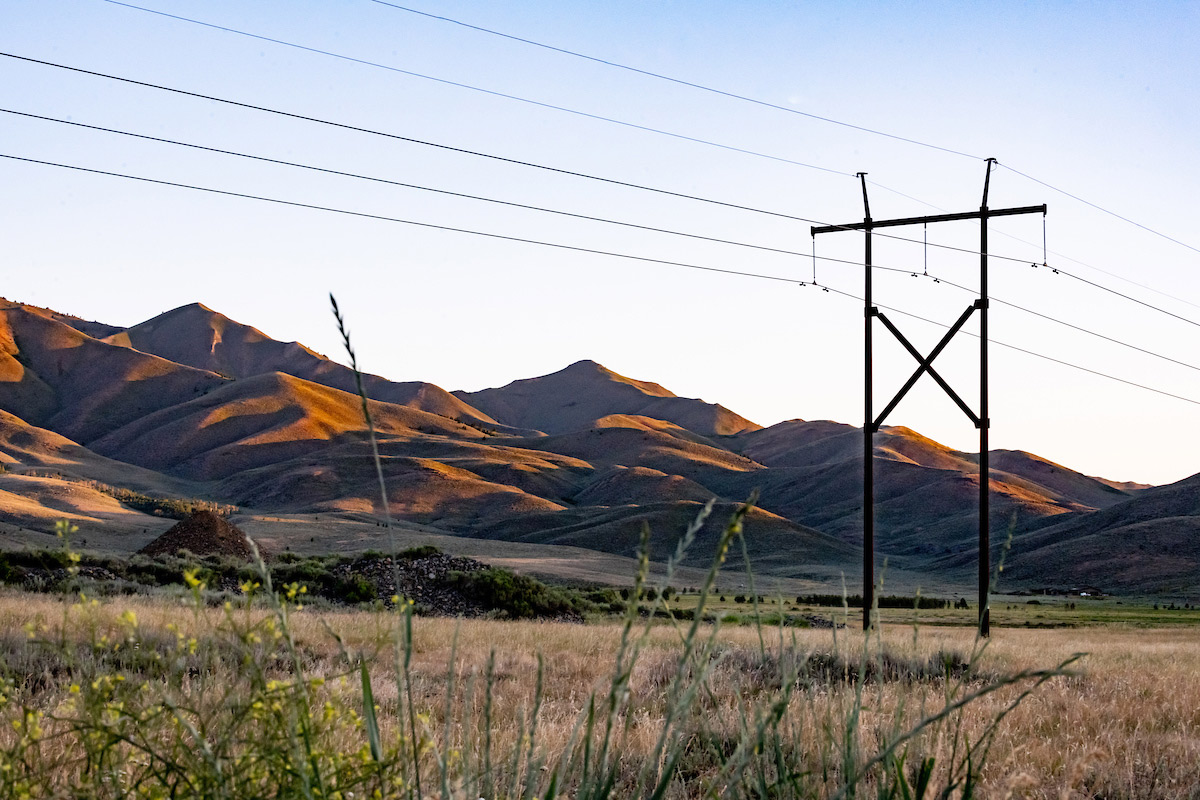Technology Investments a ‘Game-Changer’
Broadband, Online Initiatives Improve Accessibility to Statewide Programs
When broadband internet recently arrived at the University of Idaho’s Sandpoint Organic Agriculture Center, Kyle Nagy said the technology became an instant “game-changer” on expanding distance education opportunities.
“Before, when it was windy or there would be thick cloud cover, we’d lose the internet sporadically throughout the day,” said Nagy, the center’s superintendent and orchard operations manager said.
Not having to attend a class in person on a set day and time has allowed me to thrive in all aspects of my life without feeling overwhelmed or like I couldn’t accomplish my goals. Jessica Hall, U of I graduate from Caldwell
When the College of Agricultural and Life Sciences’ center near the base of Schweitzer Mountain hosted the Heritage Orchard Conference before the pandemic, perhaps 100 people attended the in-person event.
Now, thanks to broadband installed last winter, more than 1,200 researchers, gardeners and orchardists from nearly all 50 states and 18 countries were enrolled in the webinars last spring.
“We reached out to a much larger crowd,” Nagy said. “No doubt, the broadband and having the bandwidth to reach that many people has been a game-changer.”
An Idaho Department of Commerce Rural Broadband grant of $410,000 funded the service, which provides public-accessible wireless internet to the center as well as Extension offices in Boundary, Bonner and Kootenai counties.
The project is among a flurry of recent initiatives designed to help U of I meet students and community members where they are across the globe.
Student Jessica Hall, who graduated in May with a bachelor’s degree in criminology but is continuing her education by pursuing a bachelor’s in psychology, said she is thankful that U of I offers online options and is expanding such delivery because she needs flexibility to study from her home in Caldwell.
Our investments in connecting our people and locations with the rest of the world broadens the reach of our collective knowledge, research and resources and helps our students attain their goals. Dan Ewart, vice president of information technology and chief information officer
“I was a 28-year-old wife and mother of two when I decided to go to college,” she said.
Without the online option, Hall said she’s not sure she would have attended college.
“Not having to attend a class in person on a set day and time has allowed me to thrive in all aspects of my life without feeling overwhelmed or like I couldn’t accomplish my goals,” she said.
Dan Ewart, U of I’s vice president of information technology and chief information officer, said access to knowledge is core to achieving the university’s mission of innovative thinking, community engagement and transformative education.
“Broadband provides that access and allows U of I to both impart and develop that knowledge,” Ewart said. “Broadband can bring people together in ways unheard of just a few years ago. Our investments in connecting our people and locations with the rest of the world broadens the reach of our collective knowledge, research and resources and helps our students attain their goals.”

Other recent efforts to expand U of I’s online reach include:
- A $404,596 U.S. Department of Agriculture grant to improve internet access and communication technology at 28 sites in 27 counties statewide was granted. The funding will upgrade equipment at UI Extension offices in 21 counties, five research and Extension centers, the university’s Rinker Rock Creek Ranch near Hailey and the Moscow campus.
- A U of I Online Education Working Group recommends investing $1 million annually over the next several years to build strategic programs and support services for online and distance learners. It recommends an additional $666,000 for technology upgrades statewide.
- The Idaho Regional Optical Network, a broadband consortium in which U of I is a founding charter associate, is expanding its state broadband network to 12 additional counties. The goal is to offer distance education delivery from all 42 U of I Extension offices and nine research and Extension centers.
- The State Board of Education’s Idaho Online Program provides statewide partnership opportunities with a digital course-sharing campus.
- U of I received $993,000 from the Governor’s Emergency Education Relief fund for digital infrastructure and hardware for classrooms statewide during the COVID-19 pandemic. About 140 faculty laptops and 50 student laptops were purchased along with technology to equip 21 classrooms in research and Extension centers. U of I employs 130 faculty at research and Extension centers throughout Idaho.
- U of I spent more than $400,000 last summer to outfit 50 classrooms with technology that enabled the university to reach students at a distance.
Ewart said such initiatives put technology at the hands of U of I instructors that allows for student connections in areas that may not otherwise be available.
While U of I will always deliver an unparalleled in-person education, just as it has for more than 130 years, the world demands accessibility at a distance. Scott Green, U of I President
“Students can come to these locations for face-to-face interactions or to connect wirelessly at high speeds to resources throughout the world,” he said.
U of I President Scott Green said investments in technology and broadband, sped up by the pandemic, can ensure Vandals now and in the future have access to learning environments in any subject, no matter where they are.
“While U of I will always deliver an unparalleled in-person education, just as it has for more than 130 years, the world demands accessibility at a distance,” Green said. “We can provide that access to every corner of Idaho — and around the globe.”
Article by Brian Walker, University Communications and Marketing.
Photos by University of Idaho Photographic Services.
Published May 2021.







